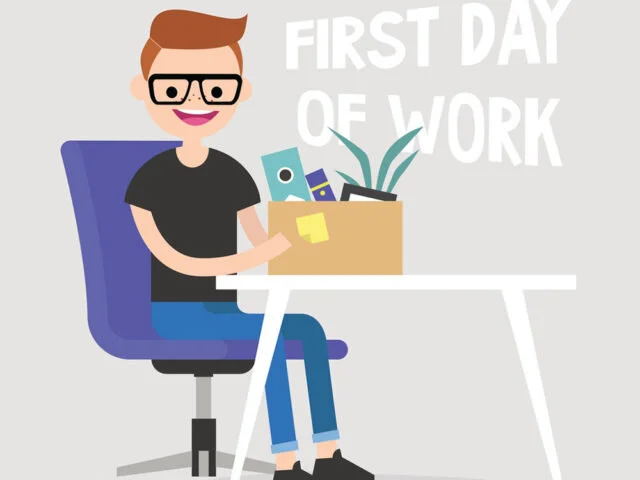So you've landed your first job as a developer. You know the basics of coding, maybe one or more frameworks. But what other things do you need to know when you want to work in a professional environment. Which tools do you need to learn? How are you going to work together on a project with the other members of your team?
I found myself in that situation some time ago and that’s what this article is about. I will talk about the things I needed on my first day at the office, just to get me up and running, and be able to participate in an ongoing project.
I learned html, css, php and Laravel pretty much on my own, with the help of online resources, most of which are free. I also took some paid courses with Udemy, which is, in my opinion, great value for money. There are a few downsides as well. You don’t get any feedback on your work, which makes it harder to improve your skills. More importantly, when you take that step from online courses to a job as a developer, you find out that there’s quite a bit of technology that you didn’t know you were gonna need.
I’m going to discuss the following topics because these were the ones I wish I had studied before I started my job.
- Git
- Docker
- Package management (composer for php, NPM for Node)
Git
First of all, let’s talk about Git. Git is a version control system (VCS). That means it’s a tool that helps you track changes to your source code, collaborate with others, and manage different versions of a project over time. If you've never used it before, either because you're new to development, or because you're used to developing projects all by yourself, it may be confusing or overwhelming at first. Regardless, you're going to need it, so it's best to dive into it as quickly as possible.
To avoid at least one common misconception: Git is the version control system, GitHub is a cloud platform for hosting Git repositories. You'll need to know both, but it's important to understand the difference. Basically, you'll be pushing and pulling your files to and from Github (the server), using Git (the system).
Before you install Git, you should know that Git exists in different flavors: there's the command-line (CLI) version, and there's the GUI version. You may be tempted to go for the GUI version, just like me. My advice however is to take the more difficult road and start with the CLI version. Once you know your way around, you can switch to the GUI version, but chances are that you won't.
Getting access to GitHub is easy: just go to github.com and create an account. The structure of a typical project may seem complex to you, with a master branch, feature branches, pull requests, etc. Just take it one step at a time, and don't bother too much about the seemingly endless possibilities and settings. Remember the basic workflow and you'll be fine.
Connecting your local machine to your GitHub account isn’t too difficult, but if you’ve never used ssh before it can be somewhat tricky. There are basically two ways to connect GitHub to your local repo: you can use https, but then you’ll need to provide your password every time you want to push or pull data from the server. So in my opinion it’s better to use ssl, even though the initial config is a bit harder. You can find more details about adding an ssh key at the bottom of this article. Keep in mind that my local system runs Ubuntu desktop. If you’re on Windows or Mac, you may need to adjust your procedure slightly. If you run into trouble, just google it, there’s more than enough information online.
What I found to be quite useful is some kind of Git cheat sheet. Certainly the first couple of days it will save you time if you keep it close. The list of commands below is very short. My suggestion is that you make your own version. That’s also the best way to remember it.
Set the basic parameters - this is what you do the first time you run Git
Before you start working on an already existing project, you need to make a local copy of the project
Say you need to make some changes to a project - this would be a typical workflow
Now you start to work on your code. When you are done:
When your code is ready and you have pushed everyting to Github, it's time to make a Pull Request (PR). Go to Github and find the branch you've been working on. You will notice the button that says 'New pull request'. Complete the request. This will trigger a notification to whoever is responsible for reviewing your code. When the review is complete, your code will then be merged into the main branch.
In the beginning, you'll probably make the error of working in the wrong branch. I know I did. Don't panic, there are ways of fixing this. Just look up 'git wrong branch' on Stack Overflow.
This short introduction into Git and Github covers only the very basics of what you need to know. There's plenty of free stuff online however. I use Youtube a lot for crash courses, and Brad Traversy's channel is one of my favorites. Here's a link to his Git & Github crash course. Git & GitHub Crash Course 2025
Coming up next: Docker
SSH
When you want to connect your local machine to the GitHub website with ssh (Secure Shell), you will first need to add an ssh key to your local machine and then paste this key into your GitHub account. Open a terminal window on your machine. The procedure is as follows (on Linux):
In Github, go to Settings, SSH and GPG keys. Click 'New SSH key'. Enter a description and paste the key. You might get a request to check your identity with a verification code.

